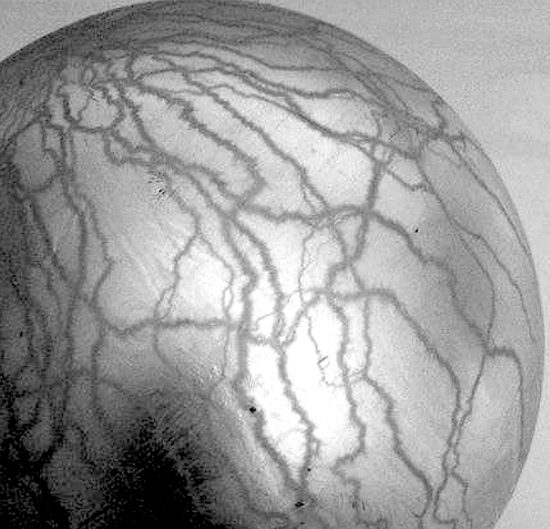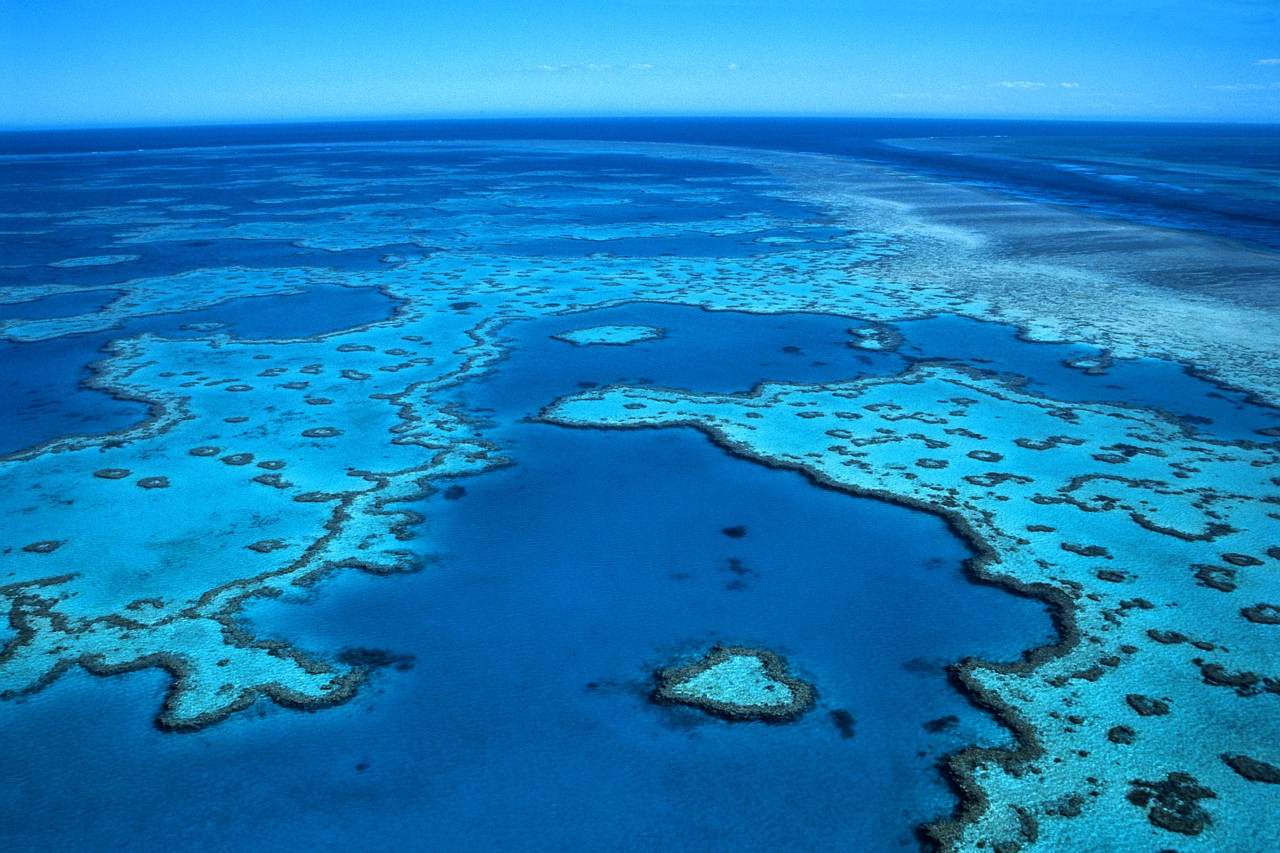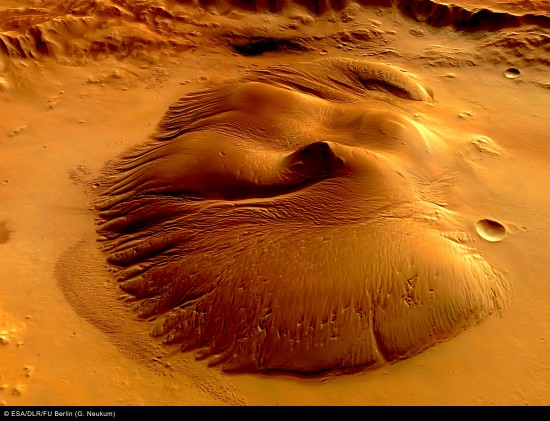Jan 26, 2015
Hidden water on Mars?
Denial ain’t just a river in Egypt.
— Mark Twain
A recent press release reiterates the hope that water was once abundant on Mars and may yet be, locked in frozen vaults beneath several meters of planetary regolith. The percentages of deuterium to common water is how they are making this determination.
NASA investigators think that the remaining deuterium in the Martian lithosphere is evidence for evaporation. Since “heavy water” evaporates less easily than H2O, the more water that is lost to space means more HDO is left behind. Using three different telescopes, scientists probed for something to analyze. Said Ulli Kaeufl of ESO [ironically]:
“I am again overwhelmed by how much power there is in remote sensing on other planets using astronomical telescopes: we found an ancient ocean more than 100 million kilometres away!”
Planetary scientists correlate canyons, undulations, and other structures on Mars with water flowing on the surface, eroding like water is supposed to erode features on Earth. A theory supporting oceans of water on Mars millions of years ago seems to be contradicted by mineralogical evidence, such as olivine deposits that would be destroyed by water. The flowing water hypothesis continues to guide consensus theories, however.
In past studies, crustal folds were discovered that supposedly obscured the shape of a fossil coastline on Mars. This is said to be due to deformation during a past change in rotational direction. Theories state that some kind of imbalance in the mass distribution inside Mars tilted the planet by at least 50 degrees on its axis, causing crustal distortions. The change in orientation caused increased exposure to the solar wind, resulting in much of the water that once occupied the ocean basins to be lost.
It is proposed that one-fifth of the Martian surface was once covered with water, so there “must be” more water remaining, locked-up in the rocks or buried underground in giant blocks of ice. It is possible that there are ice deposits on Mars formed during the catastrophic events that altered its surface. The aforementioned plasma discharges left behind sinuous rilles, flat-floored craters, “railroad track” patterns in canyons, intersecting gullies, and giant mesas with Lichtenberg “whiskers.”
The supposed water runoff from the rims of large craters down their slopes of is probably not the result of melting ice from beneath the surface dust but from falls of dust. The blackened tracks left by such falls provide evidence for their electrical origin and not an aqueous one.
Previous Picture of the Day articles highlighted the dune fields on Mars, their carved faces, and the craters associate with them. Since standard geological and astrophysical theories offered no explanations except those that depend on comparisons with Earth-based formations, it was concluded that electricity is the one unifying factor that explains how they all could be created.
The large-scale structure of Mars, with its continent-wide canyon, gigantic volcanoes, thousand-kilometer-wide craters, fractures, plateaus and blasted wastelands of crushed stone was most likely created a relatively short time ago, as has been written for many years in these pages. The relationship of deuterium to common water is most likely electrical in origin, as well. The same plasma discharges that formed the areological structures on Mars are also responsible for the radioactive water. Rather than the remains of an ancient ocean, deuterium is what was left behind when electric arcs of planetary dimension impacted Mars.
Stephen Smith
Down to the Sea

An aluminized rubber ball after exposure to an electric arc for approximately one second. Credit: Cj Ransom
Sep 28, 2016
Europa is not a harbor for life.
In March of 1979 Voyager 1 found that Europa appeared to be completely encased in water ice, with few craters. Sinuous channels, called “rilles,” extend for thousands of kilometers across its face. Cycloid, dual ridge “faults” mystified NASA mission team members and continue to do so.
Based on recent observations by the Hubble Space Telescope, astrophysicists speculate that there are lakes of water beneath Europa’s ice, just above a salty ocean. Computer simulations indicate that Europa has a thick shell of water ice floating on top of the conjectural sea. Mainstream theories state that the moon is “kneaded” by gravitational tides from Jupiter, creating stress cracks that form gigantic ice rafts. Like icebergs on Earth, the rafts are said to float, merging and separating due to heat from the moon’s interior. That heat is also conventionally attributed to Jupiter’s gravitational forces.
Do breaking and colliding ice rafts create parallel grooves with levees several meters high? Europa’s rilles are not analogous to ice cracks on Earth, since variations in thickness and composition that repeat over long distances should not be expected. Yet, repetitive patterns are observed on Europa. The swirls and loops that cover the moon are only duplicated in the laboratory using plasma discharge equipment.
According to a previous Picture of the Day, planetary scientists, using the Hubble Space telescope, believed that they detected plumes of water vapor escaping from Europa’s south polar region. Later observations found no sign of the “geyser” activity.
Geoff Yoder, acting associate administrator for NASA’s Science Mission Directorate wrote:
“Europa’s ocean is considered to be one of the most promising places that could potentially harbor life in the solar system. These plumes, if they do indeed exist, may provide another way to sample Europa’s subsurface.”
When the Galileo space probe explored Jupiter and its moons, it detected electrical activity between them. So-called “volcanic” plumes were seen erupting from Io. As other Picture of the Day articles argue, the plumes are the result of cathode arcs, electrically etching the surface and blasting sulfur dioxide “snow” up to 150 kilometers into space. Those electric discharges are now acknowledged because the “footprints” of all four of Jupiter’s large moons were seen in its aurora.
Consensus viewpoints misinterpret rilles on Europa as “vents,” channeling water to the surface. Based on Electric Universe theory, they are incisions on the moon caused by traveling electric arcs. Europa was once gouged and torn, rather than cracked and broken. A giant electric auger cut across the surface, disregarding the topography: a sure sign that electricity was the active agent. Europa’s rilles show parallelism, not because they are open cracks, but because filaments of electric charge traveling across a surface tend to align and follow the ambient magnetic field direction.
Electric Universe advocates propose that the rilles and hot pole on Europa are heated by electromagnetic induction, where an electric current returns to Jupiter’s plasma sheath. As electrical input to Europa varies, the strength of the ultraviolet signal also varies, creating a false impression of water vapor plumes that come and go.
Stephen Smith



